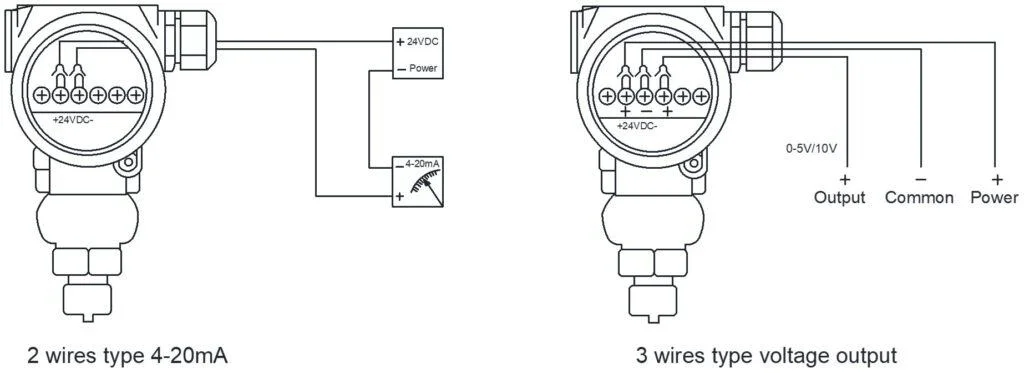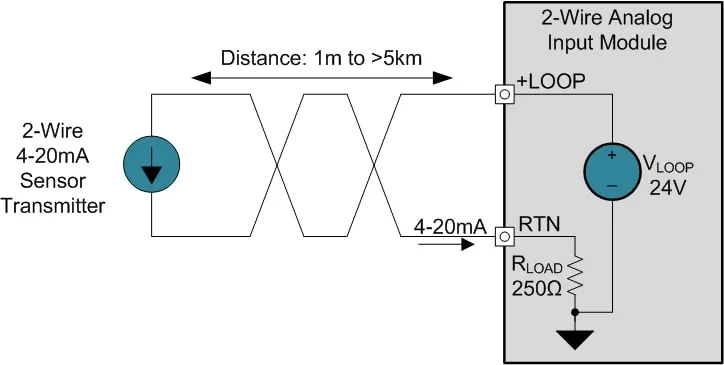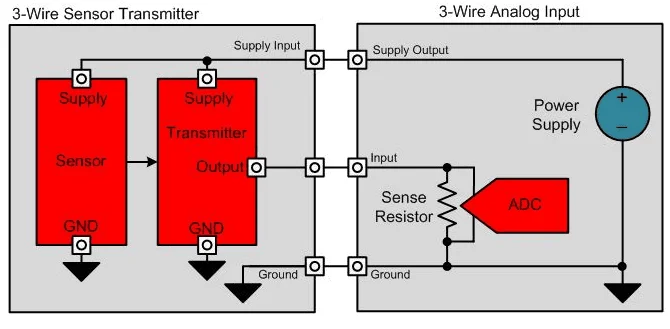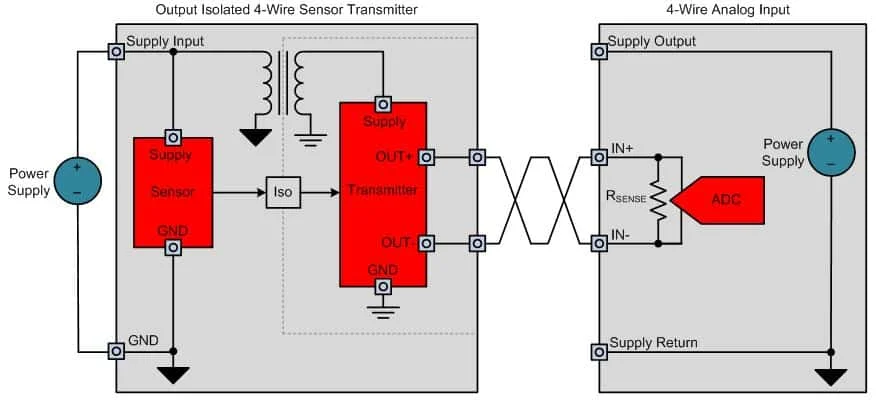4–20mA sensor transmitters are very common in industries to measure physical parameters such as pressure, temperature, flow, etc. Based on how they are connected to the process control and automation systems, they are classified into 2-wire, 3-wire, and 4-wire signal transmitters. This article will help you understand the underlying concepts and the difference between 2-wire, 3-wire, and 4-wire signal transmitter connections.

Difference between 2-wire, 3-wire, and 4-wire signal transmitter connections
In order to understand the difference in connections, one should first know the components used in a signal transfer loop and their roles.
The below are basic elements of a current loop:
- Power supply: Typically a 24VDC power source is used to power the loop.
- Receiver: The receiver receives the transmitted signal. In most cases, it is the analog input channel of a PLC.
- Transmitter: The transmitter transmits data from a sensor to the receiver.
- Wires: To interconnect the power supply, receiver, and transmitter.
2-Wire signal transmitter connection diagram
The connection diagram for a 2-wire current loop is shown below:

- A 2-wire 4-20mA signal transmission loop does not require an external power source.
- The analog input module should be of source type.
- A 2-wire transmitter connection uses only two wires for both power supply and signal transmission.
- It is the simplest and most cost-effective configuration.
- Typically, it relies on a constant current source to power the transmitter and transmit the signal. The current varies to represent the measured parameter.
- Because the same wires are used for power and signal, there can be a voltage drop along the wires, affecting the accuracy of the measurement.
- Suitable for applications where simplicity and cost are primary concerns, and where signal accuracy is not critical.
Understand the concepts of a 4-20mA current Loop
3-Wire signal transmitter connection diagram
The connection diagram for a 3-wire current loop is shown below:

- A 3-wire transmitter uses three wires: two for power supply and one for signal transmission.
- It provides better signal accuracy than a 2-wire transmitter because a dedicated wire is used for the signal.
- The three-wire configuration helps mitigate the voltage drop issues encountered in 2-wire setups.
- Commonly used in applications that require higher accuracy and where cost is less of a concern.
4-Wire transmitter connection diagram
The connection diagram for a 4-wire current loop is shown below:

- A 4-wire transmitter uses four wires: two for power supply and two for signal transmission.
- This configuration offers the highest signal accuracy because there is complete separation between power and signal wires.
- It eliminates the voltage drop issue entirely, making it ideal for precise measurements.
- Often used in laboratory settings, scientific research, and industrial applications where accuracy is critical.
In summary, the choice between 2-wire, 3-wire, and 4-wire signal transmitter connections depends on the specific requirements of the application. 2-wire transmitters are the most cost-effective but may sacrifice some accuracy. 3-wire transmitters strike a balance between cost and accuracy, while 4-wire transmitters provide the highest accuracy but come at a higher cost. The selection depends on the trade-off between these factors and the precision required for the measurements in a given system.
External references:
Difference of 4-20 mA in 2-wire and 3-wire technology in pressure sensors
